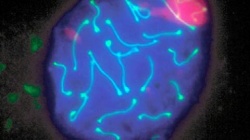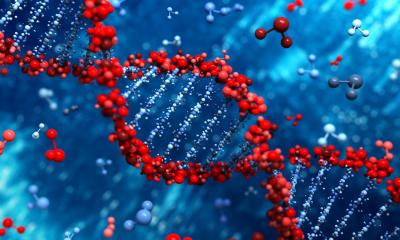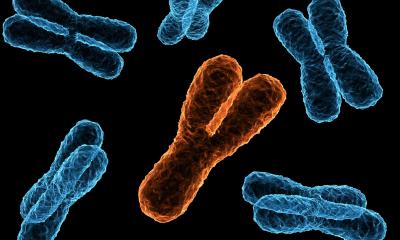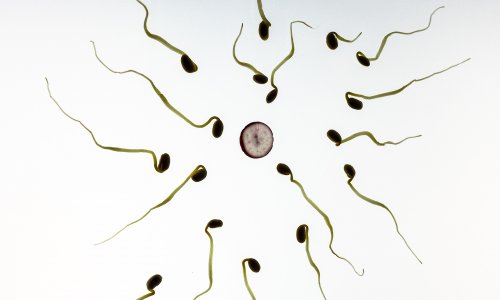Protein capable of regulating DNA repair during sperm formation
Researchers from the Universitat Autònoma de Barcelona (UAB) and the UAB Institute of Biotechnology and Biomedicine discovered that the signalling route triggered by the ATM protein regulates DNA repair during the production of spermatocytes by meiosis, the cell division process which yields spermatozoa.

In experiments conducted with genetically modified mice, researchers observed that when the ATM protein is eliminated, or its activation is reduced, spermatocytes (precursors of spermatozoa) which present breakage in the genome do not block their cellular cycle and therefore do not have the capacity to progress more than normal, given that they do not correctly repair DNA breakage.
Therefore, the research shows that these mutations affecting the signalling route which depends on the ATM protein, as well as the drugs inhibiting the function of this signalling route such as some anti-tumour drugs, could produce infertility problems in humans.
The discovery will allow to delve deeper into the mechanisms regulating the formation of gametes (eggs and sperm). It is known that the ATM protein is one of the main proteins involved in DNA repair in somatic cells (any of the cells forming part of our organism, except for germline cells). This study, published recently in PLOS Genetics, shows that in the particular case of meiotic cells such as spermatocytes, the signalling route of the ATM protein also participates in the control system of the cell cycle progression in response to DNA damage, something which until now was unknown.
Gene Repair
Sexual reproduction requires the fusion of two gametes (egg and sperm) which combine their genetic material to produce an embryo. Therefore, the number of chromosomes of these cells must be reduced by half through a specialised cell division called meiosis. At the beginning of meiosis, germline cells intentionally generate multiple double chain breakages along the whole DNA genome. The reparation of these DNA breakages, through a process called homologous recombination, allows homologous chromosomes to pair up and guarantee a balanced segregation during the meiotic division and thereby avoid the formation of gametes with an incorrect number of chromosomes which could result in chromosome disorders due to the presence of aneuploids (such as Down's Syndrome and other similar disorders), or in spontaneous abortions.
Since these repair errors in DNA breakage can generate instability in the genome, the process of repairing the breakages is a highly regulated one. It is therefore essential that there be control mechanisms capable of detecting errors in this process and halting the cell cycle with the aim of allowing the cell to repair the breakages or, if not possible, to eliminate the damaged cell.
International Collaboration
The project's leading researcher is Doctor Ignasi Roig, lecturer of the Unit of Cytology and Histology at the Department of Cellular Biology, Physiology and Immunology (UAB), and researcher of the Genome Instability and Integrity group at the Institute of Biotechnology and Biomedicine (IBB) of the Universitat Autònoma de Barcelona. In addition to Dr Roig, Sarai Pacheco and Marina Marcet Ortega, also belonging to the same research group, participated in the study. Researchers from the Howard Hughes Medical Institute (New York) and the Memorial Sloan-Kettering Cancer Center (New York) also formed part of the team.
Source: Universitat Autonoma de Barcelona
28.04.2015











